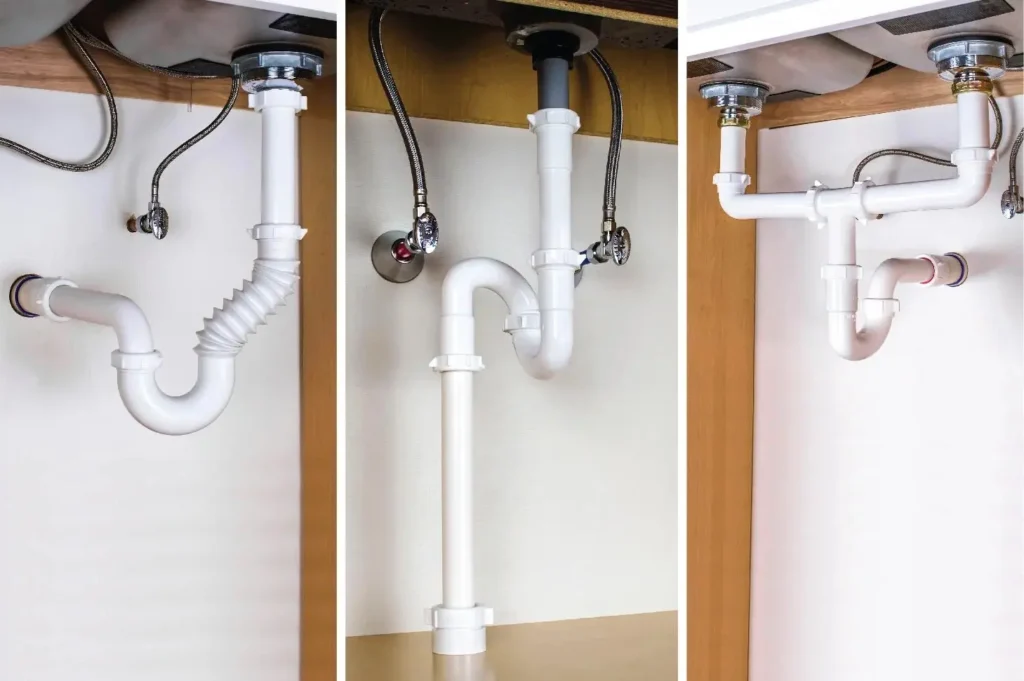Every homeowner should know how to install and fix bathroom sinks. Understanding how your sink works lets you handle maintenance issues with confidence. You can save time and money by doing minor repairs yourself.
Keeping your sink clean and checking for leaks can stop big problems before they start. Knowing when to call a professional plumber is also important. Using quality parts and proper installation during sink installation helps your plumbing last longer.
This article will teach you the basics of bathroom sink plumbing. We’ll cover the different types of under-sink setups and the important parts that keep your sink working right. Let’s start your journey to becoming a sink plumbing expert!
Types of Under Sink Set-ups
There are many types of under-sink set-ups for bathroom sinks, each with its own features and installation needs. Knowing the differences helps when you’re thinking about renovating or replacing your sink.
Pedestal sinks are a popular choice. They have a freestanding design with a basin on a vertical pedestal. They look classic and elegant but need exposed plumbing. This might not be ideal for everyone. Yet, they’re great for small bathrooms because they save space.
Vanity sinks are another common choice. They sit in a cabinet or vanity unit. Vanity sinks look modern and streamlined. They also have hidden plumbing and extra storage, making them perfect for bigger bathrooms or those who want a tidy space.
Wall-mounted sinks are great for saving space and looking minimalist. They stick right to the wall, making the bathroom feel open and airy. But, they need strong wall support and special plumbing, which can make installation harder.
When picking an under-sink set-up, think about these things:
- How much space you have in your bathroom
- The style and look you want
- What you need in terms of functionality and storage
- The plumbing needs and how hard it is to install
No matter which set-up you choose, it’s important to know the plumbing parts and how they work together. This knowledge helps with upkeep and fixing things. By understanding these basics, you can keep your sink working well for a long time.
Bathroom Sink Plumbing Components
Knowing the parts of your bathroom sink’s plumbing is key for upkeep and fixing issues. Shutoff valves, drain assemblies, and more each have a big role. They make sure your sink works well and doesn’t leak.
Shutoff Valves

Shutoff valves are a must-have for safety in your bathroom sink. They sit under the sink and let you stop the water for repairs or emergencies. Checking and keeping these valves in good shape stops leaks and makes sure they work when you need them.
Supply Tubes

Supply tubes bring water from the shutoff valves to your faucet. They’re strong, made of materials like braided stainless steel or plastic. Checking these tubes for damage or leaks often can stop water damage and keep the water flowing well.
Drain Tailpiece

The drain tailpiece links your sink to the P-trap. It’s usually metal or plastic and can be adjusted for your sink’s height. Making sure it connects right with the P-trap stops leaks and keeps the drain working right.
P-Trap
The P-trap is a curved part of the drain that does two important jobs. It keeps sewer gasses out and catches debris to prevent clogs. You can take it out for cleaning to keep your drain working well.
Related Article: Why Does My Bathroom Sink Smell Like Sewer?
Drain Pipe

The drain pipe carries wastewater from your sink to the main drain line. It connects to the P-trap and should slope right and not have blockages. Cleaning and looking after your drain pipe stops clogs and leaks, keeping your sink working great.

